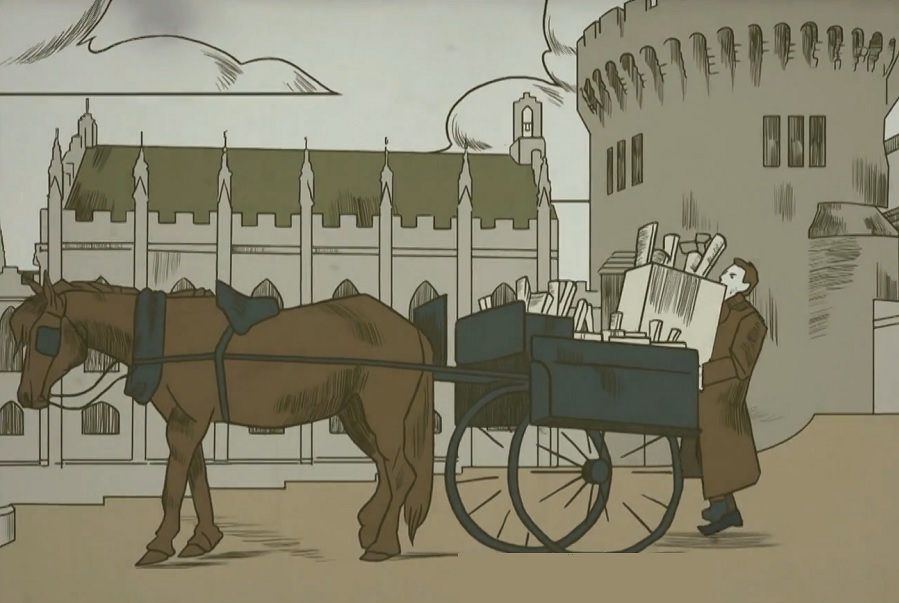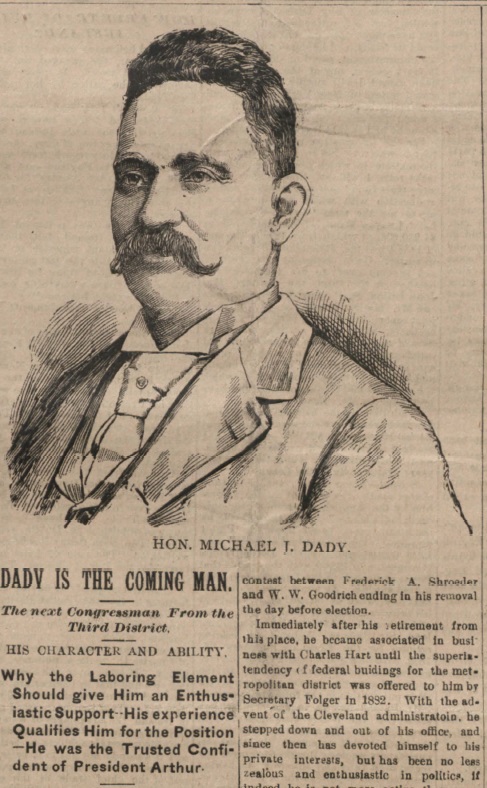The Oireachtas Library marked the centenary of the handover of Dublin Castle with an exhibition of some of the treasures from the Dublin Castle Collection.
On the morning of 16 January 1922 journalists, photographers and an eager crowd of civilians gathered on the grounds and at the gates of Dublin Castle. Over a week had passed since the ratification of the Anglo-Irish Treaty. Newspapers reported a jovial and good-humoured atmosphere, as the paraphernalia of the British administration was dismantled and loaded up onto lorries.
At 1:45pm a cheer rose up when the cars containing Michael Collins and other members of the provisional government arrived. They walked through to the Privy Council Chamber, where they were met by Lord FitzAlan-Howard, the last Lord Lieutenant of Ireland, high ranking civil servants and the heads of the Royal Irish Constabulary and Dublin Metropolitan Police. Collins handed a copy of the Treaty to Lord FitzAlan-Howard, who congratulated him and announced that the provisional government was formally installed.

Michael Collins arriving at Dublin Castle / Courtesy of the National Library of Ireland
Symbolic event
Symbolically the handover of Dublin Castle was a momentous event in the centuries-long struggle for Irish sovereignty. It was somewhat eclipsed in public memory, however, by the bitter civil war that followed soon after.
“The fact that Dublin Castle has, to all intents and purposes, changed ownership, is something that must be regarded as a stirring sign of the times.”
Irish Examiner, 17 January 1922
For many Irish people Dublin Castle was at best a symbol of poor public administration and at worst a symbol of sinister colonial oppression. It had served as the official headquarters of the English and British administration for hundreds of years. The king or queen’s representative in Ireland, the Lord Lieutenant, had apartments at the Castle and hosted many public and social gatherings. But the complex also housed the offices of government departments, military, police and high-ranking legal officials. Oversight of these lay most directly with the Chief Secretary of Ireland, a government ministry that carried a great deal of political power in contrast to the ceremonial position of the Lord Lieutenant.
The Dublin Castle Collection
One decision to be made while dismantling the former British offices in Dublin Castle was what to do with the remaining reference library of the Chief Secretary’s Office. Dating back to the 16th century, this contained thousands of volumes of parliamentary material, books, maps, newspapers, manuscripts, prints and pamphlets. In 1924 the collection was transferred to Leinster House, likely through the influence of Henry Egan Kenny. Kenny was the first official librarian of the fledgling parliamentary library and had previously worked at Dublin Castle.
Given the broad time span of the material, major themes and events of Irish history are represented. There is published and archival content relating to the 1641 Rebellion, the Restoration land settlement, the Popish Plot, the Act of Union, Catholic emancipation, the Fenian rebellions and trials, and the agrarian and political conflict of the 1880s. There are reports and pamphlets on customs, banking, crime, education, health, military affairs, politics, agriculture, industry, and science, along with books on travel, history and biography. Some highlights are exhibited here.
Satire in the nationalist press
Dublin Castle, the Chief Secretary and Lord Lieutenant were the subject of much satire in the Irish nationalist press, and this is evident in the bound collections of political cartoons from the 1880s and 1890s. In this cartoon from the Weekly News Chief Secretary George Trevelyan, looking worse for wear, carries a bag of ‘dirty linen’ as he greets the incoming Secretary Henry Campbell Bannerman outside Dublin Castle.
Dublin Castle Collection
Most of the Dublin Castle Collection has been digitised. To browse the content,visit the Oireachtas Library Digital Collections and select Dublin Castle from the search options.
Historical documents
To see more digital exhibitions which highlight some of the fascinating items in our collection, visit the Historical documents page.




